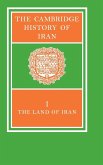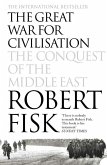I.B.Tauris in association with the Iran Heritage Foundation The Safavid era is of special significance in the history of Iran. Under the Safavids - between the sixteenth and the mideighteenth century - Iran was transformed and a state emerged which was the forerunner of the Iran of today in several important ways. The age is known for its wealth of contributions to Persian culture and to the arts of the Islamic world, its robust military encounters with its Ottoman and Mughal neighbours and growing contacts with western Europe. With the exception of diplomatic and commercial contacts with western European countries, little is known about the Safavids' foreign relations - their commercial, cultural, social and political exchanges with the rest of the world. Iran and the World in the Safavid Age presents the most recent research into Safavid Iran's foreign relations. It challenges the long-held notion that, with the adoption of Shi'ism, Iranians retreated into relative isolation, suggesting rather that they engaged with the world in unprecedented and exciting ways. With contributions from the leading authorities in the field, Iran and the World in the Safavid Age explores Iran's relations with other countries and cultures. Examining how Iran was itself perceived as well as how it viewed the outside world, this groundbreaking book sheds new light on the history of Iran's relations with the world beyond its borders and expands our understanding of this pivotal period.








